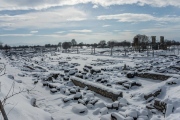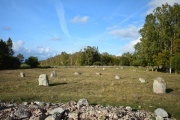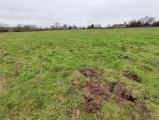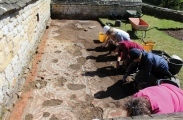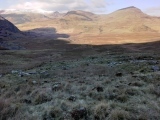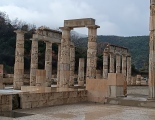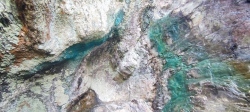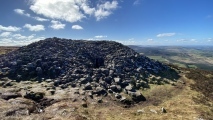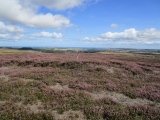Andy Burnham's Blog, page 80
January 17, 2024
Philippi
Colonists from Thasos founded the city of Krenides in 360/359 BCE. In 356 BCE the city besieged by the Thacians turned to king Philip II, father of Alexander the Great, for support. Philip conquered it, fortified it and renamed it Philippi after himself. After the battle of Philippi, in 42 BCE, the city became a Roman colony.
Published on January 17, 2024 10:35
January 16, 2024
Frösslunda Gravfält
A 1.3 km grave field situated on shingle bank on the island of Öland, Sweden. Of the 120 or so Iron Age graves, 16 were excavated in 1902. The dead of Frösslunda were buried with few, simple objects such as iron knives and clay pots. Many graves contain small stone caskets for children. Located along a road which contains standing stones, various shape of stone enclosures and cairns, see our nearby sites list on this page for many more.
Published on January 16, 2024 07:43
January 15, 2024
Croix de Chantemesle
Situated on the pilgrims' route to Mt. St Micheal between the villages of St Martin de Connée and La Chaussée d'Orthe, there stands an ancient cross at the junction of three chemins. It is well weathered but the original markings are still just visible.
Published on January 15, 2024 09:33
January 13, 2024
Tasburgh Fort
Illegal nighthawkers' treasure hunting at Tasburgh earthworks leaves it full of holes. More in the comments. Hillfort in Norfolk. This hillfort is difficult to interpret. It is roughly oval in plan surrounded by earth ramparts. It stands within the village of Upper Tasburgh, and Tasburgh church lies within the fort near its southern side. The best preserved ramparts lie on the northern side where there is still an ancient hedgerow. Excavation has shown that the fort was inhabited in the Middle Saxon Period (650-850 AD) up to 1200 AD.
Published on January 13, 2024 17:56
January 11, 2024
Chedworth Villa Nymphaeum
The Nymphaeum or water shrine at Chedworth Roman Villa (NT) in Gloucestershire. Likely to have been a pre-existing spring with associated divinities before the Romans arrived, and the reason for the siting of the villa. Now two 5th-6th century radiocarbon dates give the mid range date for the mosaics construction would be AD 475-495, so two to three generations beyond the time we previously thought people occupied villas in style.
Published on January 11, 2024 10:12
January 10, 2024
Nant y Gors Cairn and Cist
A cairn near Cefn y Capel with a 5m diameter of loose and earthbound stone that's raised to about 0.6m at its highest point. It lies on north-west sloping ground and it has two hut circles in close proximity. Either of the two route to visit it are challenging but the views make up for it.
Published on January 10, 2024 12:47
January 9, 2024
Vergina
The site of the the palace where Alexander the Great was crowned king - has reopened after a 16-year restoration, more in the comments
. City dating back to 3000 BCE. There are remains of the Palace of Aiges, theatre and habitations. The site also has about 300 small Iron Age tumuli as well as the large tumuli of Macedonian Kings listed separately. (see the nearby sites list on our page)
. City dating back to 3000 BCE. There are remains of the Palace of Aiges, theatre and habitations. The site also has about 300 small Iron Age tumuli as well as the large tumuli of Macedonian Kings listed separately. (see the nearby sites list on our page)
Published on January 09, 2024 03:15
January 8, 2024
Carrigacat and Milleen copper mine
A prehistoric copper mine on the eastern slopes of Knockboy mountain in the townland of Carrigacat and Milleen, Co Cork. The mine consists of a single horizontal working, driven at an angle of 275 degrees into the rock-face. The overall length of the working is 5m.
Published on January 08, 2024 11:40
January 6, 2024
Seefin Passage Grave
It is quite a climb to reach Seefin passage mound in Co. Wicklow, but a rewarding one. The entrance to the passage is very narrow and quite a squeeze, however there is a gaping hole in the corbelled roof and the inner chambers and passage can be accessed via that. A beautifully situated monument with great views in all directions. The cairn is quite large and quartz litters the site, as is usual at these places.
Published on January 06, 2024 09:32
Quakers Causeway RB2
A low lying bronze age round barrow in a prominent position, though itself not prominent, with good views especially towards the coast. It is sited just to the east of the Quakers Causeway (path) and about 300ft to the north west of Black Howes.
Published on January 06, 2024 09:09

